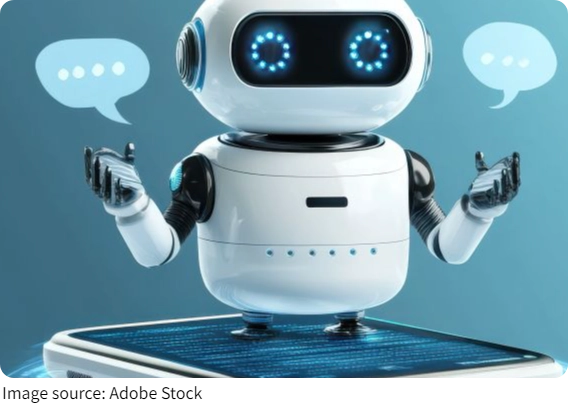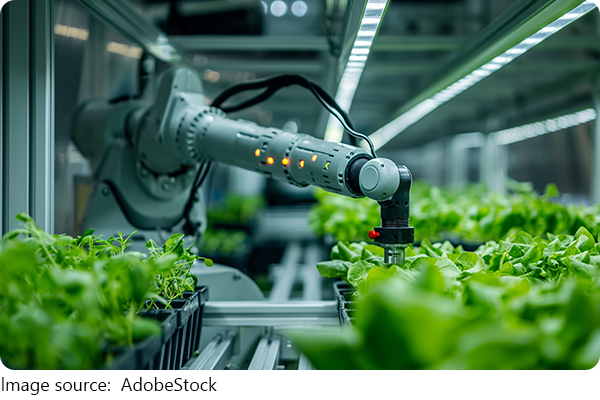Smart Factory Assistants

We've all heard about robots in factories, but have you ever wondered how intelligent robots are changing the game in manufacturing?
Let's dive into how these smart assistants are transforming the industry and what exciting developments lie ahead.
What Are Intelligent Robots?
Intelligent robots are machines equipped with advanced technologies like artificial intelligence (AI), machine learning, and sensors that allow them to perform complex tasks, learn from their environment, and adapt to new situations. Unlike traditional robots that follow fixed instructions, intelligent robots can make decisions, recognize patterns, and even predict maintenance needs, making them invaluable in modern manufacturing.
Current Applications in Manufacturing
In today's factories, intelligent robots are taking on a variety of roles:
• Assembly Line Work: Robots handle repetitive tasks with precision, improving efficiency and reducing errors.
• Quality Control: Using computer vision, robots can detect defects in products faster than human inspectors.
• Material Handling: Autonomous mobile robots (AMRs) transport materials across the factory floor, optimizing logistics.
• Collaborative Tasks: Cobots, or collaborative robots, work alongside humans, assisting with tasks that require a delicate touch or complex decision-making.
These applications not only boost productivity but also enhance workplace safety by taking over hazardous tasks.
Benefits of Integrating Intelligent Robots
Implementing intelligent robots in manufacturing brings numerous advantages:
• Increased Efficiency: Robots can operate 24/7 without fatigue, significantly increasing output.
• Cost Savings: Automation reduces labor costs and minimizes waste through precise operations.
• Improved Quality: Consistent performance leads to higher-quality products with fewer defects.
• Flexibility: Intelligent robots can be reprogrammed for different tasks, allowing manufacturers to adapt quickly to market changes.
• Data Collection: Robots gather valuable data on production processes, enabling continuous improvement and informed decision-making.
Challenges and Considerations
Despite the benefits, integrating intelligent robots comes with challenges:
• High Initial Investment: The cost of purchasing and implementing robotic systems can be substantial.
• Skill Requirements: Operating and maintaining intelligent robots require specialized skills, necessitating employee training.
• Integration Complexity: Ensuring that robots work seamlessly with existing systems can be technically demanding.
• Cybersecurity Risks: Connected robots can be vulnerable to cyberattacks, requiring robust security measures.
Addressing these challenges is essential for successful integration and maximizing the benefits of intelligent robotics.
Future Trends in Intelligent Robotics
The future of intelligent robots in manufacturing is promising, with several trends on the horizon:
• Enhanced AI Capabilities: Ongoing advancements in AI will enable robots to perform more complex tasks and make better decisions.
• Human-Robot Collaboration: Improved safety features and intuitive interfaces will facilitate closer collaboration between humans and robots.
• Edge Computing: Processing data locally on the robot will reduce latency and improve real-time decision-making.
• Customization: Robots will become more adaptable, capable of handling customized production runs efficiently.
• Sustainability: Intelligent robots will contribute to greener manufacturing by optimizing resource usage and reducing waste.
These trends indicate a shift towards more agile, efficient, and sustainable manufacturing processes.
Preparing for a Robotic Future
As intelligent robots become more prevalent, manufacturers must prepare by:
• Investing in Training: Upskilling the workforce to work alongside and manage robotic systems.
• Updating Infrastructure: Ensuring facilities can support the integration of advanced robotics.
• Fostering Innovation: Encouraging a culture that embraces technological advancements and continuous improvement.
By taking these steps, manufacturers can stay competitive and harness the full potential of intelligent robotics.

Let's Embrace the Future Together!
Lykkers, the rise of intelligent robots in manufacturing is not just a trend—it's a revolution. By understanding and embracing these technologies, we can look forward to a future of safer, more efficient, and more innovative manufacturing. What are your thoughts on this robotic transformation? Share your insights and let's discuss how we can navigate this exciting journey together!
-
 Turning Waste to WaterFrom Sewer to Sip: How Cutting-Edge Tech Turns Wastewater Into Safe Drinking Water
Turning Waste to WaterFrom Sewer to Sip: How Cutting-Edge Tech Turns Wastewater Into Safe Drinking Water -
 Internet Data Mining ScienceHow Deep Does Internet Data Go?! Shocking Truths Behind The Science Powering Online Insight!
Internet Data Mining ScienceHow Deep Does Internet Data Go?! Shocking Truths Behind The Science Powering Online Insight! -
 Solid Light BreakthroughIs Light the Next Building Block of Reality? Solid Photons Explained!
Solid Light BreakthroughIs Light the Next Building Block of Reality? Solid Photons Explained!